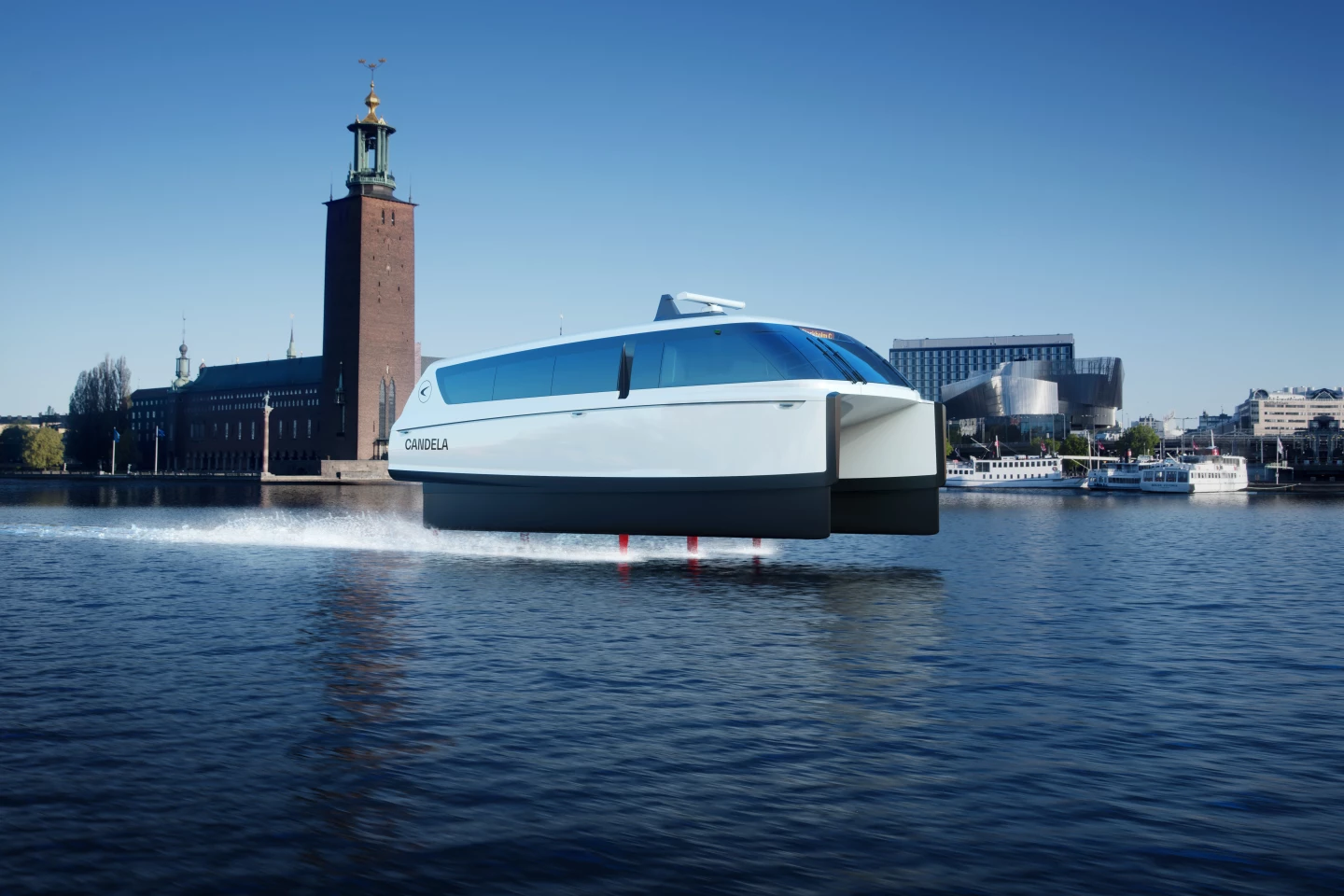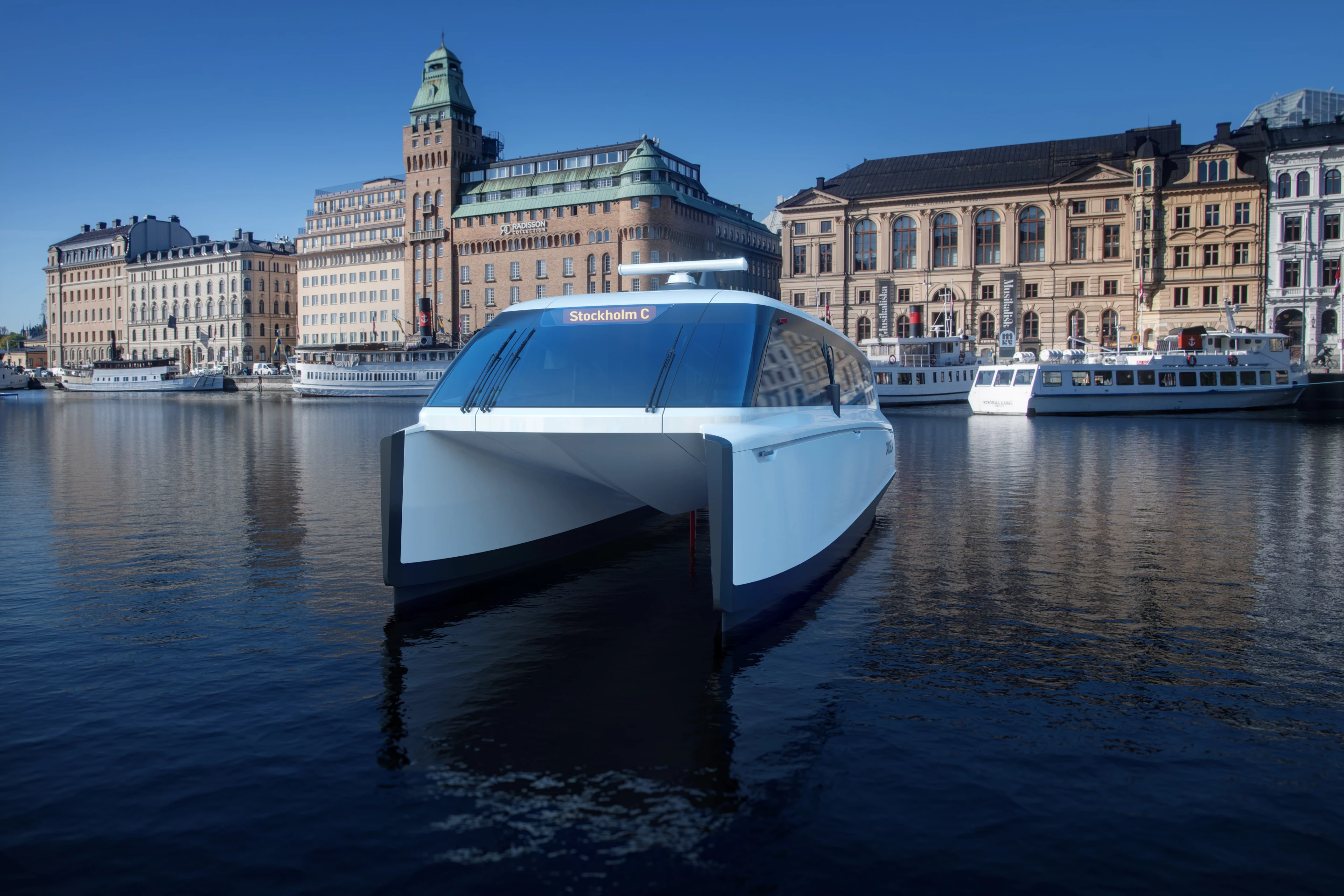Last year, Swedish electric boat maker Candela announced plans to launch a foiling passenger ferry called the P-30. Now in the final design phase, the craft has been renamed the P-12 Shuttle and will hit the water as a foiling catamaran.
The ferry's renaming reflects the company's change from noting passenger capacity to boat length, which also means that last year's P-12 water taxi has now evolved into the P-8 Voyager.
The key specs appear to have changed little since last year, with the foiling ferry carrying up to 30 seated passengers (plus a captain) – though the vessel is now a catamaran "to make it as wide as possible to get a high aspect ratio wing."
Top speed is the same at 30 knots (34 mph/55 km/h), with two all-electric C-Pod drives and three carbon fiber hydrofoils lifting the craft above the water, and an onboard computer regulating the foils at 100 times per second to offer passengers a smoother ride.
"There’s no other ship that has this kind of active electronic stabilization," said the company's VP of commercial vessels. "Flying aboard the P-12 Shuttle in rough seas will feel more like being on a modern express train than on a boat: it’s quiet, smooth and stable."

And since the 11.99-m-long (39.3-ft) P-12 Shuttle causes "near zero wake" at high speeds it has been exempted from the area's 12-knot speed limit, "allowing it to fly into the city center without causing wave damage to other vessels or sensitive shorelines."
At a service speed of 25 knots the vessel's 180-kWh battery is reckoned good for a per-charge range of between 40 and 60 nautical miles (up to 69 miles/111 km), and that battery can be juiced up in less than an hour when cabled up to a 200-kW DC charger.
The first P-12 Shuttles are expected to go into service for a nine-month trial period next year, ferrying passengers between the Stockholm suburb of Ekerö and the city center – a route that's currently served by two 200-passenger diesel vessels.
Candela is proposing replacing these ferries with at least five P-12 Shuttles, with the company's vision of providing "a nimbler waterborne public transportation system" seeing departures increase from twice per day to every 11 minutes so that folks can just turn up at the docks and hop on the next frequent flyer.

Should the trial be a success, the company hopes that the city's fleet of more than 70 diesel vessels will be replaced with P-12 Shuttles, and that land-based transport could also be shifted to the waterways.
"Maritime traffic is the region's most popular public transport, and I want to expand it," said Gustav Hemming, Vice President of the Regional Executive Board in Stockholm. "But we need better technology to travel faster and reduce climate impact. Therefore, we are happy to try this new technology for waterborne traffic. This project can contribute to solutions that we can use in Stockholm, but also provides opportunities for both exports and jobs in the Stockholm region."
Source: Candela









